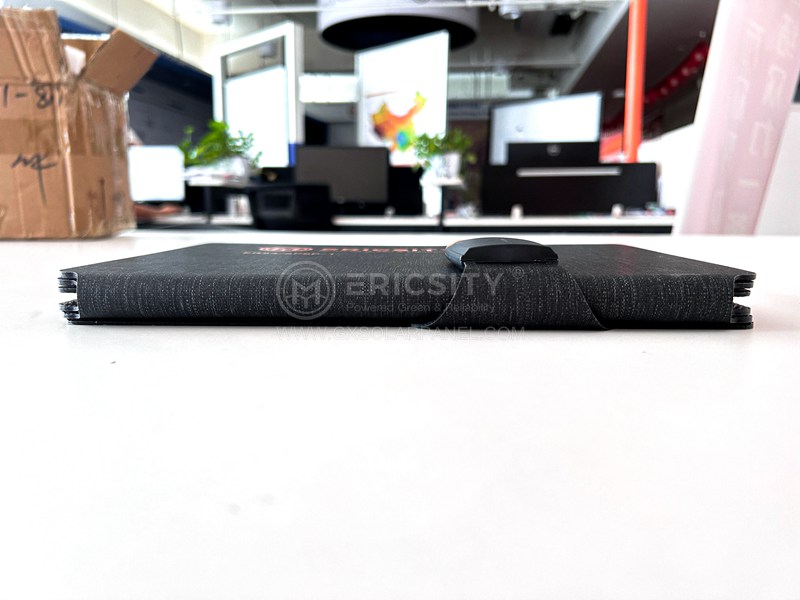HOT PRODUCT
Product Details
Flexibility Meets Performance: Achieving Optimal Efficiency With Solar Panels
Flexibility Meets Performance: Achieving Optimal Efficiency With Solar Panels
Solar energy has emerged as a viable and sustainable alternative to traditional power sources. The use of solar panels enables individuals and businesses to harness the power of the sun for electricity generation. Over the years, advancements in solar panel technology have made them more flexible and efficient, allowing for optimal energy production in various settings.
Flexibility and adaptability are crucial when it comes to incorporating solar panels into different environments. In the past, solar panels were primarily installed on rooftops or large, open fields. However, today’s solar panels offer a range of options for installation, making them suitable for diverse applications.
One notable development in solar panel technology is the introduction of flexible solar panels. Unlike traditional rigid panels, flexible solar panels are lightweight and can be bent or curved to fit various surfaces. These panels are made using thin-film solar cells that can be placed on flexible materials such as polymers. This flexibility allows for installations on irregular or curved structures, such as vehicles, boats, and even clothing.

The flexibility of solar panels opens up new possibilities for their widespread utilization. For example, integrating solar panels into the design of buildings can transform structures into self-sufficient power generators. This concept, known as Building Integrated Photovoltaics (BIPV), combines solar panels with construction materials such as windows, facades, or roofing tiles. BIPV not only generates electricity but also provides thermal insulation and reduces overall energy consumption. With this integration, buildings can become more energy-efficient and contribute to a greener future.

Another area where flexibility in solar panel installation proves beneficial is in rural and remote areas. In these locations, traditional electrical infrastructure can be expensive and challenging to establish. Flexible solar panels can be easily transported and installed, bringing energy access to off-grid communities. This flexibility allows for the creation of microgrids, which can power essential services, such as schools, medical facilities, and water pumping stations. Solar energy can improve the quality of life in underserved areas and pave the way for sustainable development.

In addition to flexibility, the focus on improving the performance and efficiency of solar panels has been instrumental in their widespread adoption. The efficiency of solar panels refers to the amount of sunlight they can convert into electricity. High-efficiency solar panels can generate more electricity from the same amount of sunlight compared to lower efficiency panels. This improvement in efficiency translates into greater energy production and shorter payback periods for solar panel installations.
The advancement in solar cell technology has led to the development of different types of solar panels, each with its unique characteristics and efficiency levels. Traditional silicon-based solar panels, known as monocrystalline and polycrystalline panels, have experienced significant efficiency improvements over the years. Additionally, thin-film solar panels, such as Cadmium Telluride (CdTe) and Copper Indium Gallium Selenide (CIGS), offer advantages like flexibility, light-weight design, and suitability for certain applications.
Researchers and engineers continue to explore new materials and designs to enhance solar panel efficiency. Some of the ongoing research focuses on improving the light-absorbing properties of solar cells, reducing energy losses, and developing multi-junction solar cells to capture a broader spectrum of sunlight. These advancements aim to increase solar panel efficiency and make renewable energy an even more viable option for meeting global energy demands.

The combination of flexibility and performance in solar panels has paved the way for innovative applications that were once considered impractical. From powering portable devices during outdoor activities to providing electricity in disaster-stricken areas, solar panels have proven their adaptability.
As society becomes more aware of the environmental and economic benefits of solar power, the demand for flexible and efficient solar panels is expected to rise. The continued advancements in solar panel technology will enable broader integration into diverse settings, optimizing efficiency and contributing to a greener and more sustainable future.
In conclusion, the development of flexible solar panels and the ongoing improvements in their efficiency have revolutionized the solar energy sector. The ability to install solar panels in a variety of settings, combined with their enhanced performance, has expanded their applications and brought renewable energy closer to mainstream adoption. As technology progresses, solar panels will continue to play a vital role in achieving optimal efficiency and transitioning to a more sustainable energy landscape.




